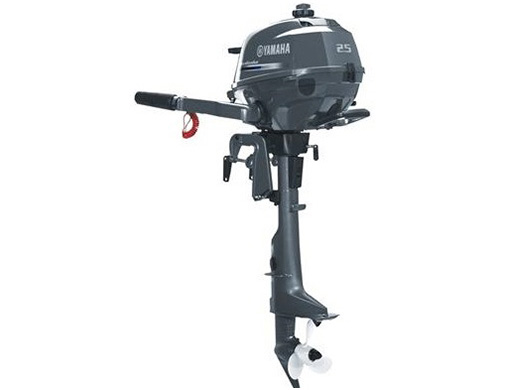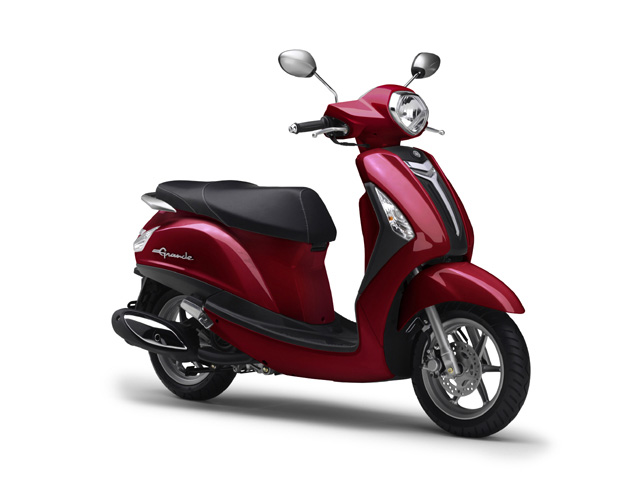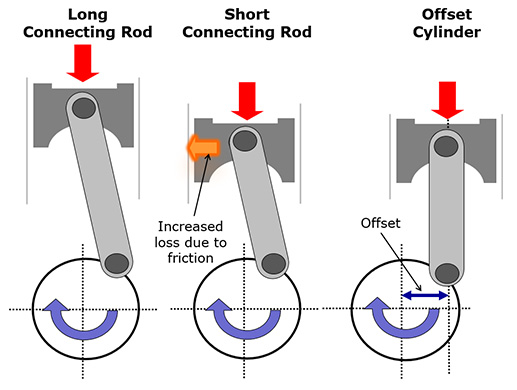An Engine Design Enabling Reduced Loss and Compact Size
介绍雅马哈发动机技术背后的故事。

雅马哈舷外电机不仅以其轻巧、紧凑、大功率的特点,以及卓越的可靠性和环保性能,在全球约180个国家和地区得到使用和喜爱。由于第一雅马哈船外机10余万个雅马哈船外机已经生产过大约50年中,P-7,在1960年销售的创建轻,结构紧凑和高性能的产品是雅马哈的MONOZUKURI的目的。在这个艰难且永无止境的探索中,有时新想法和创新技术可以在这三个方面取得进步。一个很好的例子是 2002 年发布的 72cc F2.5A(日本 F2A)紧凑型舷外发动机(#1)。这是雅马哈第一款由带偏置气缸的发动机提供动力的量产车型。据说,对于小排量舷外发动机,很难显示出它们在性能方面的区别。但是,为减少马力损失而进行的全面工程努力以及在整个发动机部件中使用最新技术使这款运行清洁的小型舷外机成为一颗宝石。
今天,您会发现大部分 F2.5A 型号都在大约 50,000 公里纵横交错欧洲的运河网络上运行。这些小舷外机用于在这些运河上安静地航行以及在海滩上娱乐。这种 4 冲程型号不仅省油且安静,而且以其令人难以置信的紧凑性而著称,这是舷外发动机设计中最难实现的目标之一。这种紧凑性的关键是采用了“偏移圆柱体”。在 F2.5A 之后,这种偏置气缸设计已经根据随后使用的每个 Yamaha 产品的各自质量和用途进行了优化。现在不仅可以在 150 马力 F150A 等舷外发动机中找到它,还可以在踏板车和摩托车中找到它,从 Vino 50cc 踏板车到 YZF-R1 超级运动旗舰车型和我们的越野摩托车(#2)。





Offset Technology
In general, the piston in an engine is pushed down by the explosive force of combustion in the combustion chamber and this is the origin of the drive force created by an engine. Strictly speaking, however, the piston is not actually pushed straight downward. Although it is small, there is in fact a diagonal component to the downward force that causes the piston to be pushed against the wall of the cylinder. This results in friction and a corresponding amount of horsepower loss. This friction-induced power loss can be reduced by lengthening the connecting rod, but lengthening the rod makes the engine heavier and larger overall.
The offset cylinder is a design that solves both of these inherently conflicting problems. This is accomplished by “offsetting” the cylinder from the crankshaft so that the axis of the piston and connecting rod are aligned vertically at the moment of combustion—when the pressure in the cylinder is at its peak. Doing this greatly reduces the friction from the diagonal force pushing the piston against the cylinder wall. At the same time, this enables more effective use of the energy produced by combustion. The engine in the F2.5A has a bore × stroke of 54 mm × 31.5 mm. The cylinder offset was set at a large 10 mm, increasing combustion efficiency and enabling a more compact design at the same time (#3).
In the offset cylinder design, the amount of offset affects the fuel efficiency, power output, engine response and more. Yamaha’s waza lies in determining the optimal amount of offset during development in line with the model’s characteristics.
